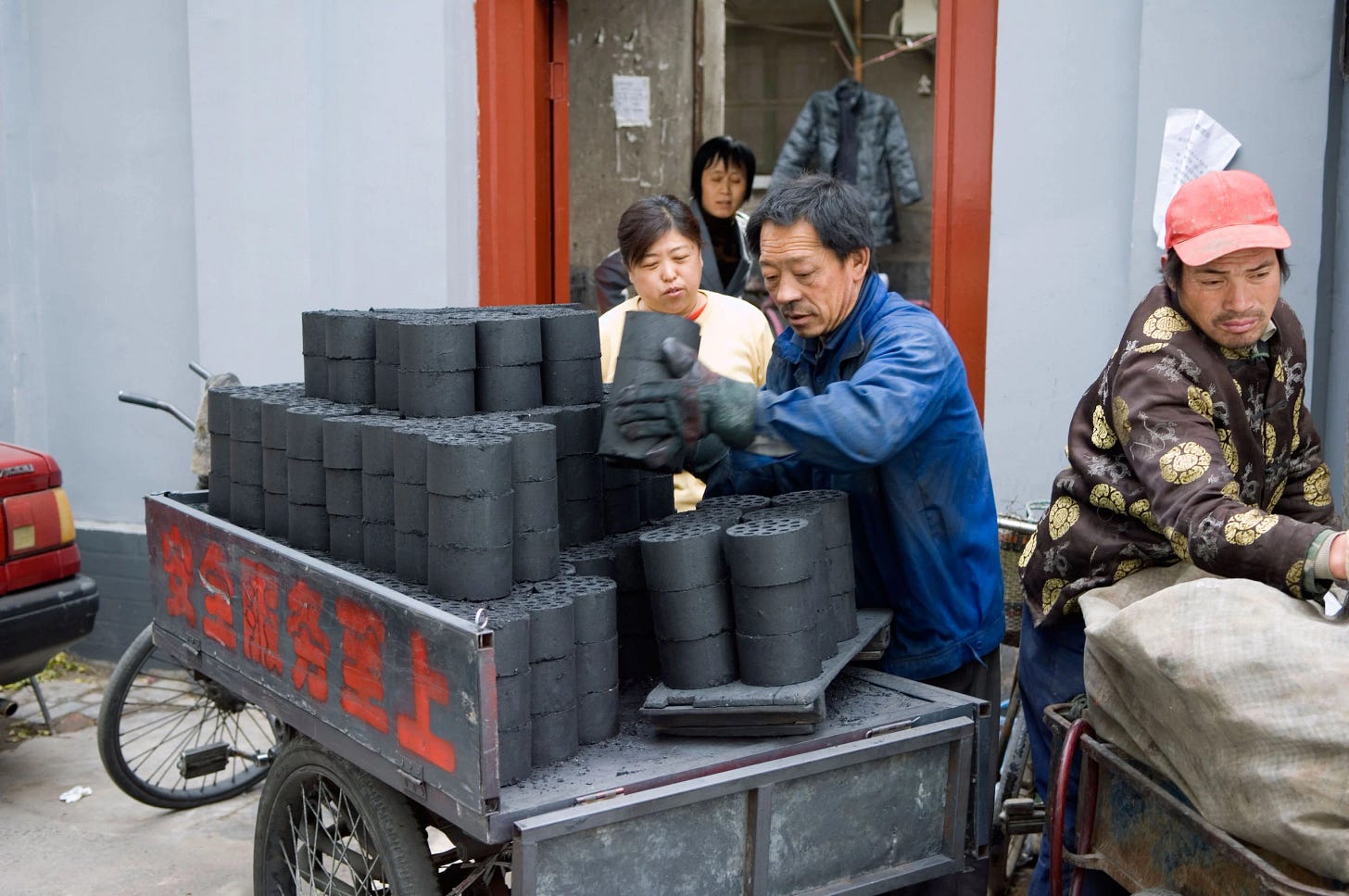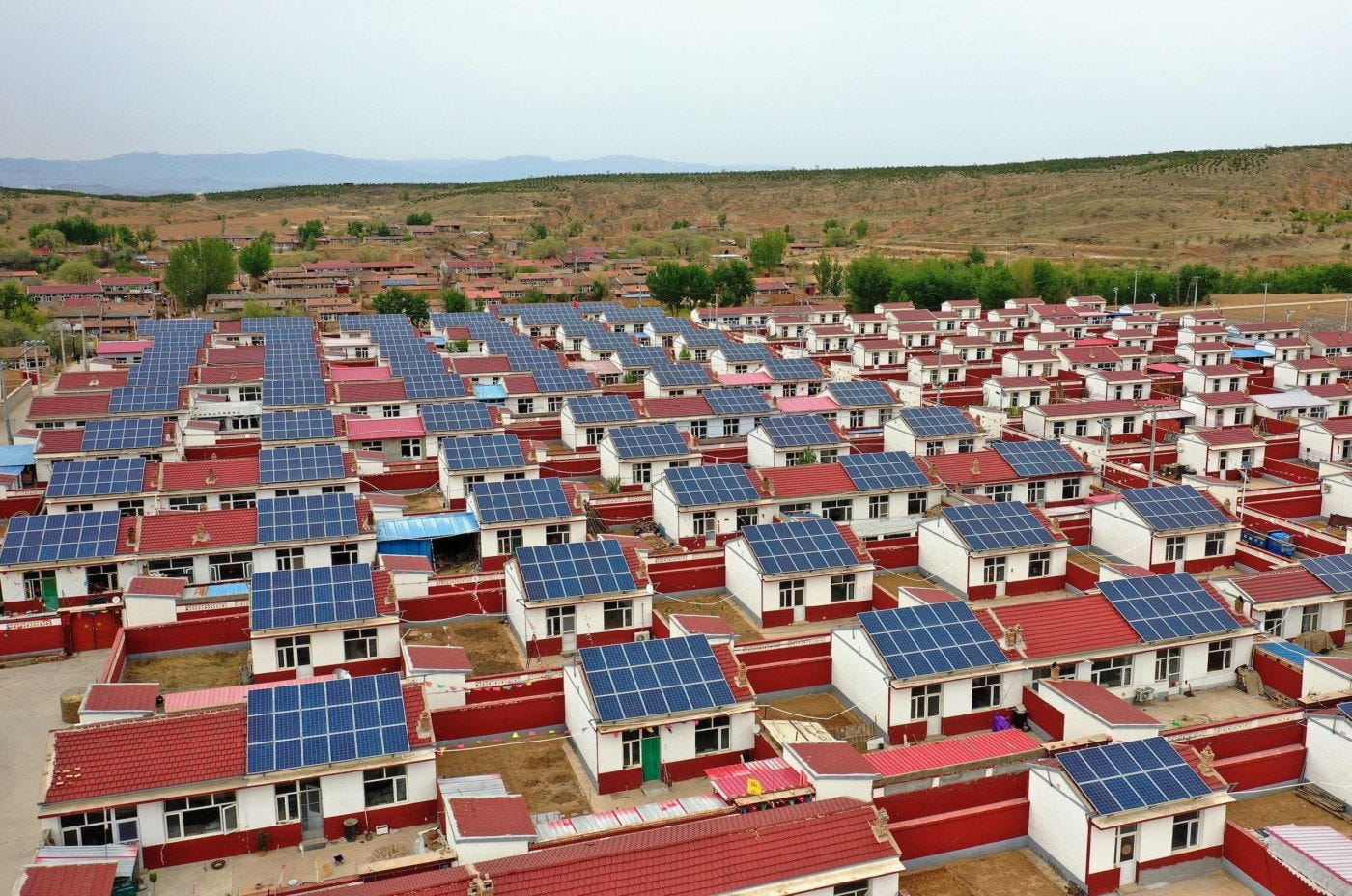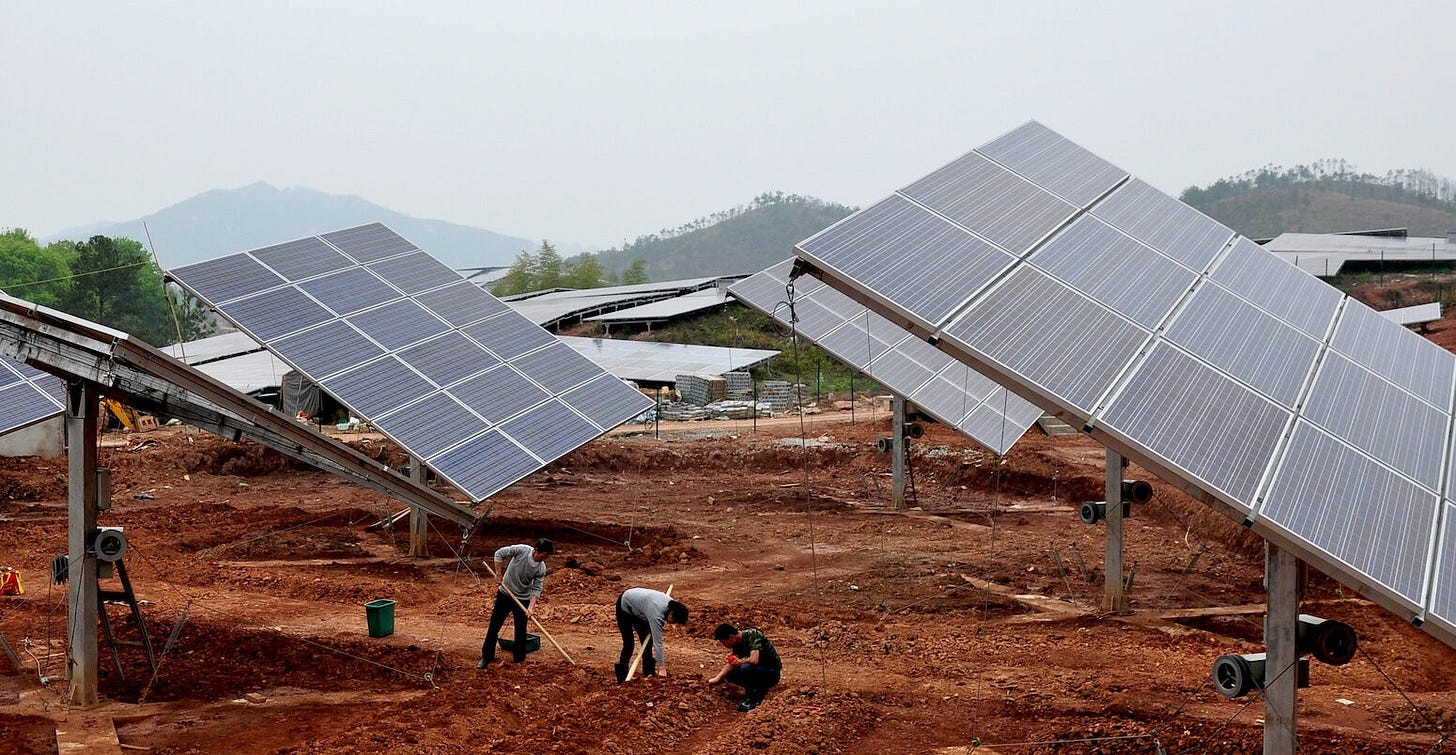Staying Warm in Rural China: Politics, Tradition, and the Struggle for Comfort
Exploring the Urban-Rural Heating Divide in China, Traditional Practices, and the Push for Clean Energy Solutions
The arrival of winter in China’s rural regions highlights a stark contrast in living standards and policy priorities. While urban centres enjoy state-subsidised central heating, many rural areas, particularly those south of the Yangtze River, continue to rely on traditional heating methods. Economic constraints, environmental policies, and cultural practices shape these methods. This divide is more than an issue of comfort; it reflects broader socio-political challenges related to inequality, governance, and the enduring effects of historical development policies.
Even in China’s northern regions, where temperatures can plummet to -30°C in Heilongjiang or -20°C on the Tibetan Plateau, the reliance on outdated heating methods remains widespread in rural areas. While cities like Harbin or Urumqi benefit from state-backed central heating, rural residents often face the brutal cold with inefficient coal stoves and wood fires. In southern provinces like Guizhou and Hunan, where central heating is almost nonexistent, households endure damp, penetrating cold as indoor temperatures approach freezing. Unlike urban households, rural residents must manage fluctuating fuel prices and the physical labour of maintaining their heating systems.
This disparity highlights broader socio-economic inequalities, with rural regions long underfunded and underserved. As the state continues to prioritise urban development, rural communities face higher living costs, fewer economic opportunities, and limited access to essential services.
Traditional Heating Methods and Their Challenges
Local customs, resource availability, and the demands of harsh winter climates have traditionally shaped rural heating solutions in China. The kang (烟)—a heated brick bed—remains a central feature in many northern rural homes, particularly in areas like Heilongjiang and Shanxi. This system, which channels heat from stoves into the brick structure, serves as a bed and a source of warmth during the long, bitter winters. Alongside the kang, coal stoves and wood-burning fireplaces have historically been the most common means of heating in regions with limited access to modern infrastructure.
While these methods hold deep cultural significance, they are severely limited. The kang requires a steady supply of coal or wood to fuel the fire, leading to high costs and inconsistent heating. Moreover, the physical demands of maintaining these systems—such as gathering fuel, cleaning stoves, and ensuring the kang remains properly fueld—place considerable strain on already overburdened rural households.
The health risks associated with traditional heating methods are profound. Indoor air pollution from burning coal and wood leads to respiratory illnesses, particularly among children and the elderly. Poor ventilation exacerbates these risks, contributing to chronic respiratory diseases and heart conditions. These health issues are compounded by the lack of modern ventilation systems, which could mitigate the dangers of traditional heating methods.
In addition to the health risks, traditional heating practices have a severe environmental toll. The heavy reliance on coal and biomass fuels contributes significantly to air pollution in northern China, worsening the country’s smog crisis. Emissions from coal-burning stoves in rural areas lead to high levels of particulate matter in the air, not only affecting public health but accelerating environmental degradation. Moreover, the widespread use of wood as a fuel source contributes to deforestation and soil erosion, further straining the local environment.
Government Initiatives and Their Impacts
In line with its broader environmental objectives, particularly achieving carbon neutrality by 2060, the Chinese government has initiated programmes to transition rural households from coal to cleaner energy sources like natural gas and electricity. One of the most notable initiatives is the Clean Heating Program (清洁取暖计划), launched in the early 2010s. This programme aims to phase out coal-based heating in northern China and replace it with more sustainable alternatives.
The environmental benefits of these efforts have been significant. The transition to cleaner heating sources has led to noticeable improvements in air quality in many regions, curbing dangerous levels of particulate matter and reducing respiratory illnesses. Studies have shown that these changes have prevented thousands of premature deaths, particularly in northern China’s most polluted provinces, such as Heilongjiang and Shaanxi.
However, the transition has not been without its challenges. Cleaner energy sources, such as natural gas and electricity, are more expensive than traditional coal, putting a disproportionate strain on rural households already experiencing energy poverty. Many families struggle with high energy bills and the financial burden of switching to cleaner technologies. This challenge is compounded by inadequate infrastructure, such as underdeveloped natural gas pipelines and unreliable electricity grids in rural areas.
International financing and cooperation have played a role in addressing these gaps. For example, the World Bank’s $300 million loan to support renewable energy-based heating projects in Shaanxi Province has provided critical funds. However, local implementation challenges—such as a lack of technical expertise, community scepticism, and insufficient skilled labour—continue to hinder progress.
These financial pressures create a cycle of economic disadvantage. For elderly residents and those on fixed pensions, the costs of cleaner heating are particularly burdensome. Weak social safety nets in rural regions further compound the problem. As policymakers push for environmental goals, debates about equity have emerged, questioning whether climate policies are leaving rural communities behind.
Grassroots Adaptation and Community Responses
In response to the high costs of cleaner heating solutions and infrastructural gaps, grassroots adaptation and community-led innovations have emerged as critical factors in addressing rural heating needs. Despite limited resources, rural communities have demonstrated resilience and creativity in blending traditional practices with modern technology.
One notable innovation in rural heating is the solar-heated kang bed (太阳能暖床), which uses solar energy to warm the traditional brick platforms. This method is operationally cost-effective and sustainable, particularly in regions with abundant sunlight like Inner Mongolia or Hebei. Solar-heated kang beds not only preserve the cultural familiarity of kang use but also reduce dependence on coal. However, adoption remains limited, primarily due to the upfront installation expense and the uneven availability of sunlight during harsh winters, when heat is needed most. Local government subsidies have helped in some areas, but the technology has yet to see widespread implementation.
Energy-efficient heat pumps (能效热泵) are another promising innovation, especially in the context of China’s push for carbon neutrality. Heat pumps extract heat from the air, ground, or water, even in extremely cold temperatures, making them a practical solution for regions with harsh winters. They are particularly effective in areas with consistent electricity access and supportive renewable energy infrastructure. However, their adoption in rural China remains in its early stages, partly due to the high initial costs, which can range from ¥20,000–¥50,000 for installation. At present, heat pumps are more commonly used in wealthier rural households or demonstration projects promoted under government programmes like the “Clean Heating Plan.” However, the technology is less common in more remote or economically disadvantaged areas.
China’s Whole County PV (Photovoltaic) Program (全县光伏计划) is a transformative initiative aimed at promoting solar energy adoption across rural counties. By facilitating large-scale installation of photovoltaic systems, the programme seeks to enhance energy self-sufficiency in rural areas. Beyond environmental benefits, the initiative offers significant economic opportunities. Many rural households participate in the programme by leasing their rooftops for solar panel installations, receiving rental income or reduced electricity costs in return. In addition, the programme has stimulated local job creation through the construction, operation, and maintenance of solar farms, providing new livelihoods in areas where economic opportunities are often limited.
However, the programme’s effectiveness hinges on local governments’ administrative capacity. Some counties have excelled, creating streamlined processes for installation and subsidy allocation, while others have struggled with inefficiency and lack of technical expertise. Furthermore, there is the challenge of grid integration—many rural areas lack the modernised electrical grids necessary to store and distribute solar energy effectively, limiting the potential impact of these installations.
Conclusion
The challenges of winter heating in rural China encapsulate a broader narrative of socio-economic disparity and environmental urgency. While urban areas benefit from state-subsidised central heating systems, rural residents continue to rely on traditional, often inefficient methods shaped by historical policies, economic limitations, and cultural practices. These methods not only strain household resources but also pose significant health and environmental risks, highlighting the need for systemic intervention.
Efforts to modernise rural heating, such as promoting solar-heated king beds and energy-efficient heat pumps, offer promising alternatives. However, these solutions face barriers in affordability, infrastructure, and regional suitability, underscoring the need for targeted policies prioritising rural equity and sustainability. Addressing these disparities requires not just technological innovation but also a reimagining of rural development that values the well-being of all citizens, regardless of their location.
As China navigates its energy transition and strives for carbon neutrality, the heating divide is a critical reminder of the importance of inclusive policy-making. Closing this gap is not merely about improving comfort; it is about advancing social justice, safeguarding public health, and ensuring that no community is left behind in the country’s pursuit of progress.








